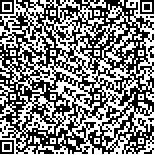徐倩,韩珍真,朱冬燕,等.健侧高频重复经颅磁刺激结合生物反馈下的空吞咽训练对脑卒中后吞咽障碍的影响[J].中华物理医学与康复杂志,2024,46(1):17-22
扫码阅读全文

|
| 健侧高频重复经颅磁刺激结合生物反馈下的空吞咽训练对脑卒中后吞咽障碍的影响 |
|
| |
| DOI:10.3760/cma.j.issn.0254-1424.2024.01.004 |
| 中文关键词: 重复经颅磁刺激 生物反馈 吞咽障碍 脑卒中 |
| 英文关键词: Transcranial magnetic stimulation Biofeedback Dysphagia Stroke |
| 基金项目:江苏省老年健康科研项目(LK2021046);南通市卫健委课题项目(QNZ2022021) |
|
| 摘要点击次数: 3542 |
| 全文下载次数: 3848 |
| 中文摘要: |
| 目的 观察健侧高频重复经颅磁刺激(rTMS)结合生物反馈下的空吞咽训练对脑卒中后吞咽障碍的影响。 方法 选取符合入选标准的脑卒中后吞咽障碍患者80例,按照随机数字表法随机分为对照组、生物反馈组、磁刺激组和联合组,每组患者20例。4组患者均予以常规吞咽功能障碍训练,生物反馈组在常规训练的基础上增加生物反馈下的空吞咽训练,磁刺激组在常规训练的基础上增加健侧高频rTMS刺激,联合组则在常规训练的基础上增加健侧高频rTMS刺激联合生物反馈下的空吞咽训练进行干预。治疗频次均为每日1次,每周治疗5 d,连续治疗3周。于治疗前和治疗3周后(治疗后),采用渗漏-误吸量表(PAS)、功能性经口摄食量表(FOIS)和标准吞咽功能评价量表(SSA)来评价4组患者的吞咽功能,并记录和比较4组患者下颌舌骨肌运动诱发电位(MEP)的潜伏期和波幅。 结果 治疗后,4组患者的PAS评分、FOIS评分、SSA评分、下颌舌骨肌MEP潜伏期和波幅较组内治疗前均显著改善,差异均有统计学意义(P<0.05)。联合组治疗后的PAS评分[(1.85±0.75)分]、FOIS评分[(5.45±1.05)分]和SSA评分[(22.45±4.45)分]均显著优于对照组、生物反馈组和磁刺激组治疗后(P<0.05),联合组治疗后的下颌舌骨肌MEP潜伏期均显著短于对照组和生物反馈组治疗后(P<0.05),联合组治疗后下颌舌骨肌MEP波幅显著高于对照组治疗后(P<0.05)。 结论 健侧高频rTMS结合生物反馈下的空吞咽训练可显著改善脑卒中后吞咽障碍患者的吞咽功能,及其下颌舌骨肌MEP的潜伏期和波幅。 |
| 英文摘要: |
| Objective To evaluate the effect of combining contralateral high-frequency transcranial magnetic stimulation (rTMS) with biofeedback-controlled empty swallowing training on dysphagia among stroke survivors. Methods Eighty dysphagic stroke survivors were divided at random into a control group, a biofeedback group, an rTMS group and a combined treatment group, each of 20. In addition to routine dysphagia rehabilitation, the biofeedback group and the rTMS group received empty swallowing training based on biofeedback or high-frequency rTMS applied to the healthy motor cortex as appropriate. The combined treatment group was given both. The treatment was administered once daily, 5 days a week for 3 consecutive weeks. Before and after the treatment, all of the subjects′ swallowing was evaluated using the penetration aspiration scale (PAS), functional oral intake scale (FOIS) and a standardized swallowing assessment (SSA). The latency and amplitude of the mylohyoid muscle′s motor evoked potentials (MEPs) were also recorded before and after the treatment. Results After the treatment, significant improvement was observed in the average PAS, FOIS and SSA scores as well as in the latency and amplitude of the MEPs in the four groups. The average results in the combined treatment group were significantly better than in the other 3 groups. The latency of the mylohyoid muscle′s MEP was significantly shorter in the combined group than in the control and biofeedback groups on average, while the amplitude was significantly greater than in the control group. Conclusion Combining contralateral high frequency rTMS with empty swallowing training based on biofeedback can better improve the swallowing of dysphagic stroke survivors. |
|
查看全文
查看/发表评论 下载PDF阅读器 |
| 关闭 |